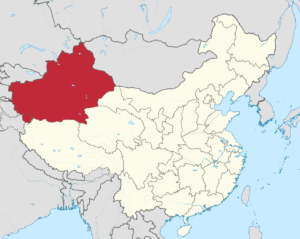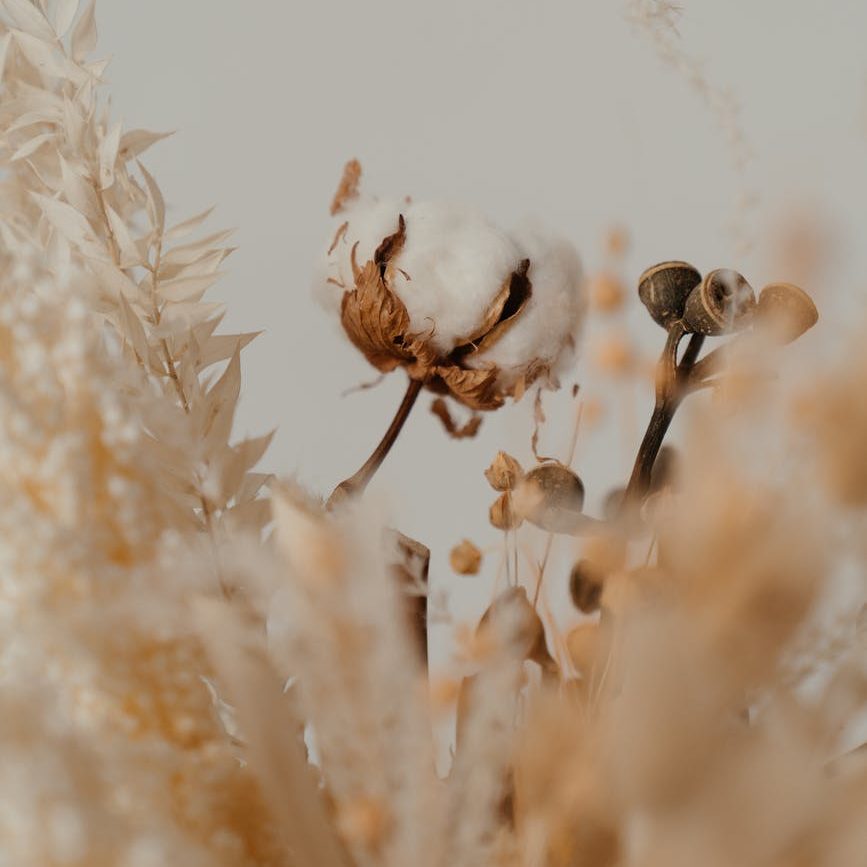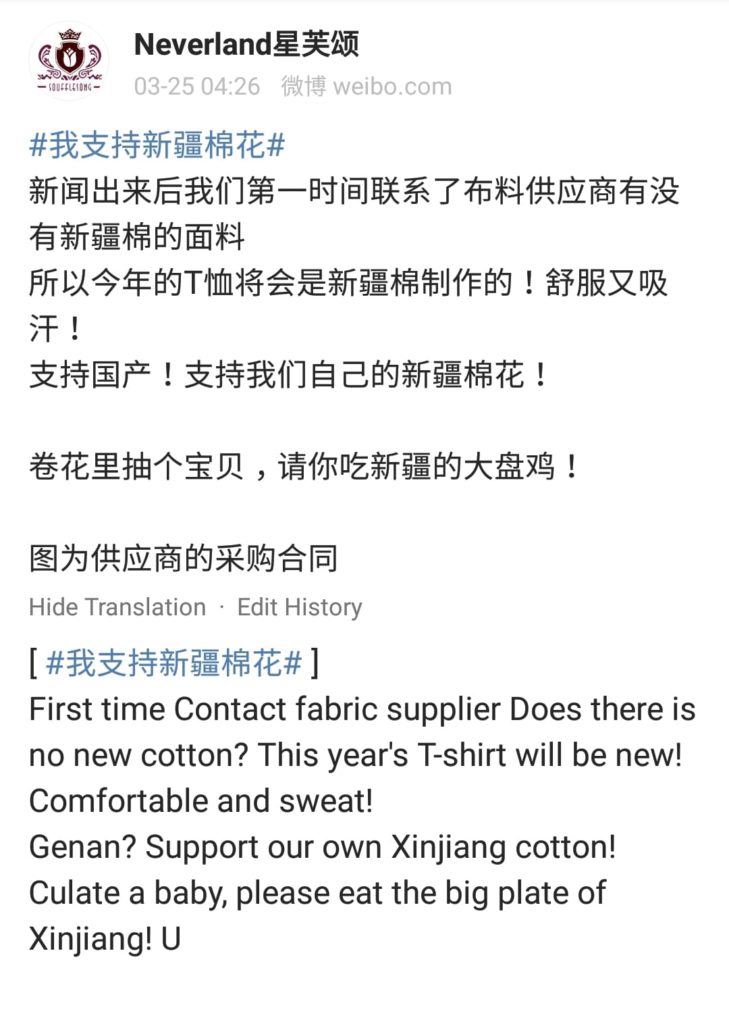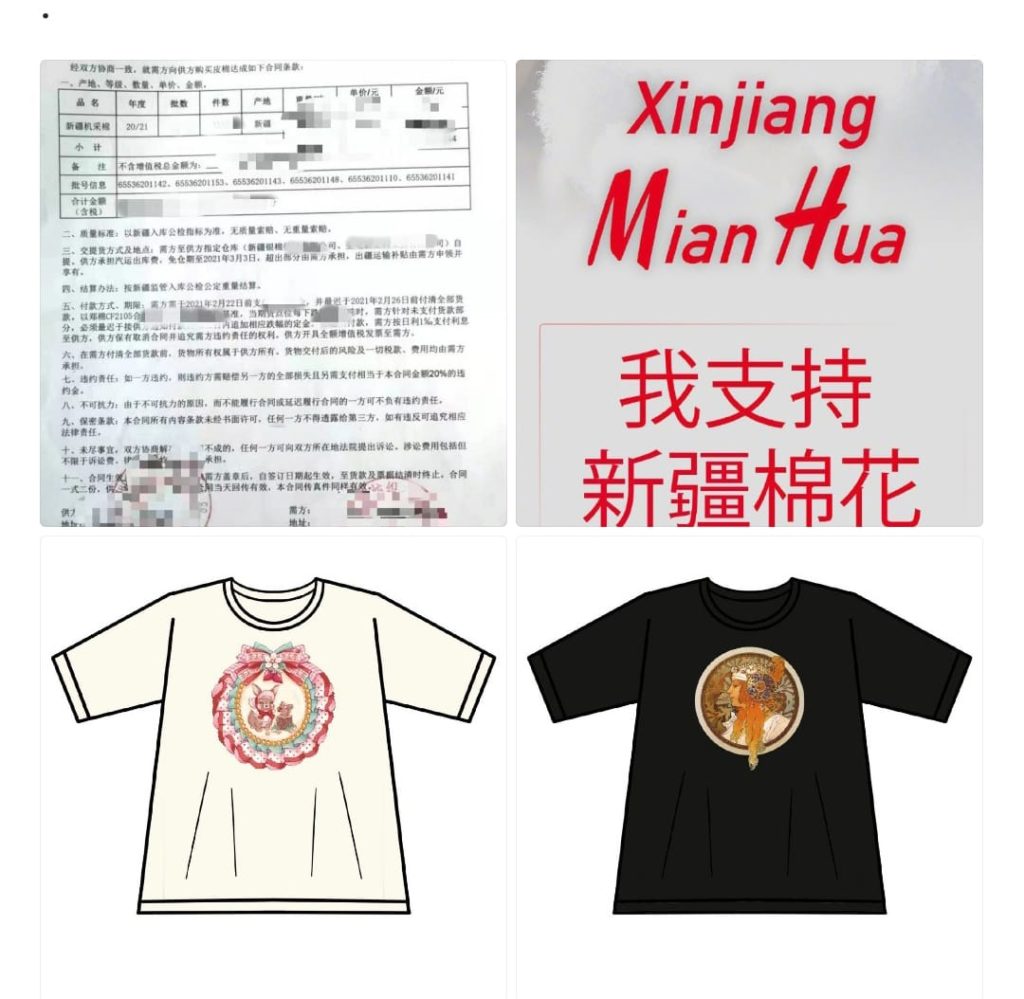News: Chinese Indie Brands & Xinjiang Cotton
If you keep a close eye on the international news, you might have heard about cotton grown in the Xinjiang region of China back in December. If you didn’t (and let’s be honest here, this past year has been rough on everyone), let’s go into some basic background. I am very far from being an expert on this, and I encourage you to read more about this very complicated situation.
First of all, if you were not previously aware, China contains multiple ethnic groups. One of these groups is a minority group called the Uyghurs. This is an ethnic group of people who lived in what was previously called the Second East Turkistan Republic, which became part of the People’s Republic of China in 1949. This corresponds more or less to the modern region of Xinjiang. Between the 10th and 17th centuries, the dominant religious practice among this ethnic group became Islam, which makes them basically a religious and ethnic minority inside a secular communist country. Xinjiang is in theory an autonomous region, but in practice things aren’t so cut and dry.
Since 2014, it’s been well documented that the communist party in China has been trying to suppress Islam in this region. They have done so via arresting people and imprisoning them in mass detention camps which the Chinese government calls “Vocational Education and Training Centers”. The Chinese government has maintained that enrollment is voluntary. This practice has been criticized by the Human Rights Watch. In 2018, the BBC used satellite imagery to estimate that hundreds of thousands of people were being held in these centers. That number has been updated to be over a million people as of late 2020.
Xinjiang produces 1/5th of the cotton in the world, and as of late 2020, evidence was found to suggest that more than half a million of the people in Xinjiang are working seasonally to pick cotton. Language in documents about this labor indicate that this is very likely forced labor. The EU, UK, US and Canada have imposed sanctions against China based on evidence of this forced labor and imprisonment. The Chinese government denies these allegations and has suppressed talking about this on Chinese social media. Western clothing retailers like Nike and H&M who have spoken out about this have had their online stores blocked and have been pulled from Chinese retail platforms. The Chinese government is encouraging people to pick local Chinese businesses instead.
Which brings us to today. Inside of China there is a strong push to agree with the Chinese government, and criticism is frequently deleted from social media at behest of the state. This is very different from the country where I live, where criticism of the government is permitted.
Several Chinese indie brands have come out in the past day or so to say that they have a preference for cotton from Xinjiang specifically in reference to this political situation, like this post from Neverland/Soufflesong:
This has resulted in these brands being blacklisted by at least one shopping service.
A more complete list of the brands that this particular shopping service will not serve is available here.
I’ve also started compiling a list of statements from various sources both in support of using the Xinjiang cotton and condemning the use of it. That list is currently incomplete, but can be found here:
I want to be very clear here: Chinese indie brands are not a homogeneous unit, nor are Chinese people, and the actions of a specific government or a specific brand should not be reflective on all the people in a country, or of a specific ethnicity, nor should the actions of one brand be seen as a condemnation of another.
While many Chinese indie brands may not be able to publicly show that they don’t support Xinjiang cotton due to censorship, I would encourage people to be mindful of their garment choices in this time. You could do this by intentionally selecting garments made from synthetics like polyester chiffon, crepe de chine, organdy and all those nice, floaty summer-weight polyester based fabrics when buying from brands that don’t disclose the source of their cotton fabrics. And of course, by being mindful of avoiding brands who have pledged support of Xinjiang cotton.
As this situation develops, I would also be mindful of looking at shopping services to see if they have a stance on this issue. I would also be increasingly mindful of avoiding reseller shops that don’t list which store items come from.
Lastly, I am not an expert when it comes to any of this, but I felt that it was important and very relevant to the lolita fashion community since it involves many trendy / high profile Chinese indie brands, so I have made an attempt to provide information / spread awareness of the situation. If I have made a mistake, or written anything in a way that is disrespectful, I absolutely welcome correction in the comments.
Legal disclaimer just to be safe: opinions expressed in this post are my own based on a limited amount of research and do not necessary reflect the stance of any other entity, including but not limited to brands I work with or review, my employer, or my country.
Additional Sources
- BBC: China’s ‘tainted’ cotton
- New Lines Institute: Coercive Labor in Xinjiang: Labor Transfer and the Mobilization of Ethnic Minorities to Pick Cotton
- BBC: Xinjiang cotton: Western clothes brands vanish as backlash grows
- NPR: China Retaliates Against Clothing Brands After Western Sanctions (audio version available)
- WBUR: U.S. Declares China’s Human Rights Abuses Against Muslim Uighurs ‘Genocide’ (audio version available)
- Australian Strategic Policy Institute: Uyghurs For Sale




Thank you for providing the additional list, as well as one-stop summary of the situation. It has been going on for a long time (I’m very ashamed of myself for knowing about the oppression of Uighur people since at least 2008 because one of my teachers has been vocal about it and dismissed it), but it’s a lot to take in, so having something in one place is always helpful.
To me this highlighted two things in our community: the discrepancy in transparency of production between East Asian brands and Western ones, and how much the fashion has grown to rely on inexpensive, readily available goods. We’ve known for a while that brands based in Europe and the Americas have been making efforts to both be ethical and be open about how they’re achieving that. But whether through language barrier, cultural barrier, being ignored or being lazy – we didn’t extend the same expectation to Chinese and Japanese brands. We’ve now had a catalyst to start that conversation and hopefully we will see something good come out of it.
As for the second point – it hit me personally when I saw Cutie Creator/Sweet Dreamer on that list. I do enjoy their accessories that I have and was about to buy some more. But once I saw that they’ve spoken in support of Xinjiang-sourced cotton, it was that moment of: a) people’s human rights are not more important than my wanting a cute headbow; and b) my wanting a cute headbow and being able to just get one whenever I fancy is incredibly privileged in the first place. I wasn’t in the fashion when lolita meant either extreme luck at getting something from Japan or making it yourself, but the sheer availability of inexpensive pieces that people can just get has certainly helped push the “I’ll just make that myself” aspect far to the side. And maybe someone seeing their favourite Chinese brand voice sentiments that support human rights abuse will take that as a prompt to be a more conscious consumer – not just of what they consume, but that they consume in the first place and why. Because I certainly don’t actually *need* any more headbows – so if I don’t *need* them, why do I keep buying them?
I never know this problem before. Thank you for bringing it up